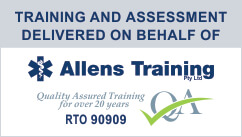Exploring the Impact of AEDs: Unveiling 5 Essential Insights
Embark on a journey to uncover the critical role of Automated External Defibrillators (AEDs) in saving lives and enhancing emergency response capabilities. Amid the realm of life-saving tools, AEDs emerge as formidable champions, standing ready to counteract the dire effects of Sudden Cardiac Arrest (SCA) with precision and efficiency.
5 Crucial Facts About AEDs
- Safety at the Core: Dispelling any misunderstandings, AEDs are designed with user safety in mind, suitable for individuals with varying levels of First Aid, their user-friendly interface ensures effective operation by anyone in critical situations.
- Guardians Across Ages: AED effectiveness transcends age barriers. Whether for adults or distressed children, these devices calibrate energy levels to ensure the safe delivery of shocks tailored to individual requirements.
- A Saviour for Expecting Mothers: AEDs play a pivotal role in aiding pregnant women facing SCA. The operational design prioritises the well-being of both mother and unborn child.
- Harmonising for Success: To achieve optimal results, combining AED deployment with Cardiopulmonary Resuscitation (CPR) from an acquired First Aid courses in Sydney is paramount. This synergy significantly enhances the chances of restoring normal heart function.
- Pervasive Accessibility: AEDs have transitioned beyond medical facilities to public spaces in the city, equipping bystanders who have undergone First Aid courses in Sydney to promptly intervene in critical scenarios.
Enhancing Lifesaving Endeavors with AEDs
AEDs, often unsung heroes, wield a remarkable power to halt the lethal progression of SCA. When the heart unexpectedly falters, thrusting an individual into a life-threatening situation, AEDs step up. With over 30,000 Sudden Cardiac Arrest incidents impacting Australia annually and survival rates plummeting below 5% without timely intervention, AEDs offer hope through precise shock delivery.
Guiding Heartbeats Back to Rhythm: Unraveling AED Mechanism
Defibrillation lies at the heart of AEDs’ mission—to restore the heart’s natural rhythm. This life-reviving process is most potent within the crucial five-minute window following SCA. AEDs meticulously analyze the heart’s rhythm, detecting irregularities, notably ventricular fibrillation. If a corrective shock is warranted, the AED administers it with surgical precision.
Key Aspects of AED Application
- Strategic Timing: AED deployment aligns with CPR initiation. CPR forms the initial response, with AEDs solidifying the path toward revival.
- Swift Activation: Once in possession of an AED from comprehensive First Aid courses in Sydney, promptly activate it and adhere to its instructions meticulously.
- Proper Pad Placement: Strip the patient’s chest of clothing and affix defib pads as directed by the AED’s visual cues.
- Analysing Heart Rhythm: Allow the AED to assess the heart’s rhythm and heed its cues.
- Moment of Shock: If the AED signals a shock, ensure a clear space around the patient before proceeding.
A Synchronised Lifesaving Approach: AEDs and CPR
Recall that AEDs complement CPR; they don’t replace it. While navigating the critical steps of emergency response, recognise the pivotal role of AEDs in strengthening survival prospects.
Equipping with First Aid Courses in Sydney
First Aid courses in Sydney provided by Simple Instruction empower you with First Aid knowledge. Our comprehensive First Aid and CPR courses prepare you for critical scenarios, encompassing AED utilisation and comprehensive emergency response. Equip yourself through First Aid courses in Sydney to be a beacon of hope and action, primed to make a difference in crucial moments.
